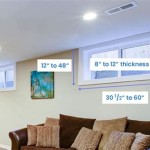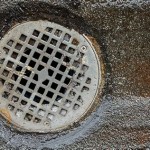Is Rubber Flooring Good For Basements? A Comprehensive Overview
Basement flooring presents unique challenges due to the inherent characteristics of subterranean environments. Moisture, temperature fluctuations, and potential flooding necessitate careful consideration when selecting a suitable flooring material. Rubber flooring has emerged as a popular option for basements, but its suitability depends on a variety of factors. This article provides a comprehensive overview of the advantages and disadvantages of using rubber flooring in basements, exploring its properties, installation considerations, and maintenance requirements, enabling homeowners to make informed decisions.
The selection of appropriate basement flooring directly impacts the overall utility and comfort of the space. Poor choices can lead to a host of problems, including mold growth, structural damage, and uncomfortable living conditions. Therefore, understanding the properties of different flooring materials and their interaction with the basement environment is paramount. Rubber flooring, with its inherent resilience and water resistance, warrants detailed examination as a potential solution.
Rubber flooring encompasses a range of products, primarily sourced from recycled rubber or synthetic rubber compounds. Recycled rubber flooring typically consists of shredded tires repurposed into mats, rolls, or interlocking tiles. Synthetic rubber flooring, on the other hand, is manufactured from polymers designed for specific performance characteristics. Both types offer varying degrees of durability, comfort, and aesthetic appeal, allowing for customization based on the intended use of the basement space.
Water Resistance and Moisture Management
One of the primary concerns in basement environments is moisture. Concrete slabs, common in basements, are porous and can wick moisture from the ground. This moisture can lead to mold growth, mildew, and damage to susceptible flooring materials. Rubber flooring exhibits inherent water resistance, preventing water from penetrating the material itself. However, this does not necessarily guarantee complete moisture protection.
While rubber is water-resistant, the seams between tiles or rolls can be vulnerable to water penetration. If water seeps beneath the flooring, it can become trapped, creating a breeding ground for mold and mildew. Therefore, proper subfloor preparation and installation techniques are crucial to maximizing the moisture-resistant benefits of rubber flooring. A vapor barrier beneath the rubber flooring is often recommended to prevent moisture migration from the concrete slab.
The effectiveness of rubber flooring in managing moisture also depends on the quality of the material and the installation method. Tightly interlocking tiles or properly sealed seams in rolled rubber flooring offer better protection against water infiltration than loosely fitted tiles. Furthermore, the type of rubber used can influence its water resistance. Synthetic rubber compounds, such as EPDM (ethylene propylene diene monomer), often exhibit superior water resistance compared to recycled rubber.
In areas prone to flooding or high levels of humidity, additional precautions may be necessary. Consideration should be given to installing a drainage system beneath the flooring or using a subfloor that allows for air circulation. These measures help to prevent moisture buildup and minimize the risk of mold growth. Proper ventilation of the basement is also essential in maintaining a dry and healthy environment.
Durability and Comfort
Rubber flooring is known for its durability and resilience. It can withstand heavy foot traffic, dropped objects, and the wear and tear associated with basement activities. This makes it a suitable choice for basements used as gyms, playrooms, or workshops. The impact-absorbing properties of rubber flooring also provide a comfortable surface for standing and walking, reducing fatigue and strain on joints.
The durability of rubber flooring is influenced by its thickness and density. Thicker and denser rubber flooring is generally more resistant to punctures, tears, and indentations. Recycled rubber flooring, in particular, can vary significantly in density depending on the manufacturing process and the materials used. Synthetic rubber flooring allows for greater control over density and composition, enabling manufacturers to tailor the material to specific performance requirements.
The comfort provided by rubber flooring is another significant advantage. Its inherent cushioning effect makes it more comfortable than hard surfaces such as concrete or tile. This is particularly beneficial in basements used as living spaces or recreational areas. The resilience of rubber flooring also helps to dampen noise, reducing sound transmission between floors and creating a quieter environment. The reduction in noise is particularly beneficial if the basement is being used as a home theatre or music room.
However, the comfort offered by rubber flooring can be subjective. Some individuals may prefer the firmer feel of other flooring materials. Furthermore, the textured surface of some rubber flooring products can affect comfort levels. It is advisable to sample different types of rubber flooring to determine the most comfortable option for individual preferences.
Installation and Maintenance
The installation of rubber flooring can range from relatively simple to more complex, depending on the type of flooring and the condition of the subfloor. Interlocking rubber tiles are often considered the easiest to install, requiring minimal tools and expertise. Rolled rubber flooring, on the other hand, typically requires professional installation to ensure proper alignment and seam sealing.
Proper subfloor preparation is crucial for a successful rubber flooring installation. The subfloor should be clean, level, and dry. Any cracks or imperfections should be repaired before laying the flooring. A vapor barrier should be installed to prevent moisture migration from the concrete slab. Failure to properly prepare the subfloor can lead to uneven flooring, water damage, and premature wear.
The specific installation method will vary depending on the type of rubber flooring. Interlocking tiles are typically laid directly on the subfloor, with the edges locking together to create a seamless surface. Rolled rubber flooring may be glued down to the subfloor or installed using a floating method. The choice of adhesive will depend on the type of rubber and the subfloor material. Following the manufacturer's instructions is essential for a proper installation.
Maintenance of rubber flooring is generally straightforward. Regular sweeping or vacuuming will remove dirt and debris. Occasional mopping with a mild detergent is sufficient to clean the surface. Harsh chemicals and abrasive cleaners should be avoided, as they can damage the rubber. Promptly cleaning up spills will prevent staining and discoloration. With proper care, rubber flooring can maintain its appearance and performance for many years.
The level of maintenance required can also be influenced by the intended use of the basement space. A basement gym, for example, may require more frequent cleaning than a basement used primarily for storage. The type of rubber flooring can also affect maintenance requirements. Some types of rubber are more resistant to stains and scratches than others.
Despite its many advantages, rubber flooring is not without its potential drawbacks. The initial cost can be higher than some other flooring options. The odor associated with new rubber can be a concern for some individuals, although this typically dissipates over time. The appearance of rubber flooring may not appeal to everyone, although a wide range of colors and textures are available.
Furthermore, the potential for staining and discoloration should be considered. Certain substances, such as oil-based products and dyes, can permanently stain rubber flooring. Prolonged exposure to sunlight can also cause fading or discoloration. Choosing a high-quality rubber flooring product and taking precautions to protect it from staining and fading can minimize these risks.
Ultimately, the decision of whether or not to use rubber flooring in a basement depends on individual needs and preferences. Considering the specific challenges of the basement environment, the properties of rubber flooring, and the installation and maintenance requirements is essential for making an informed decision.

The Best Basement Flooring Options Inc

Interlocking Home Gym Rubber Floor Tiles Color 2x2 Ft X 8mm

What Is The Best Basement Gym Flooring Rubber Foam Recommendations

Best Budget Basement Flooring Ideas

Best Basement Flooring Options Liquidators

Rubber Flooring For Basements Vs Foam And Plastic Tiles Best Options

Rubber Basement Flooring Options Prices Home Pros

What Are The Best Flooring For Basement In Homes

Residential Rubber Flooring Tiles Rolls Mats Home Pros

Best Basement Flooring Options For A Flood Prone







